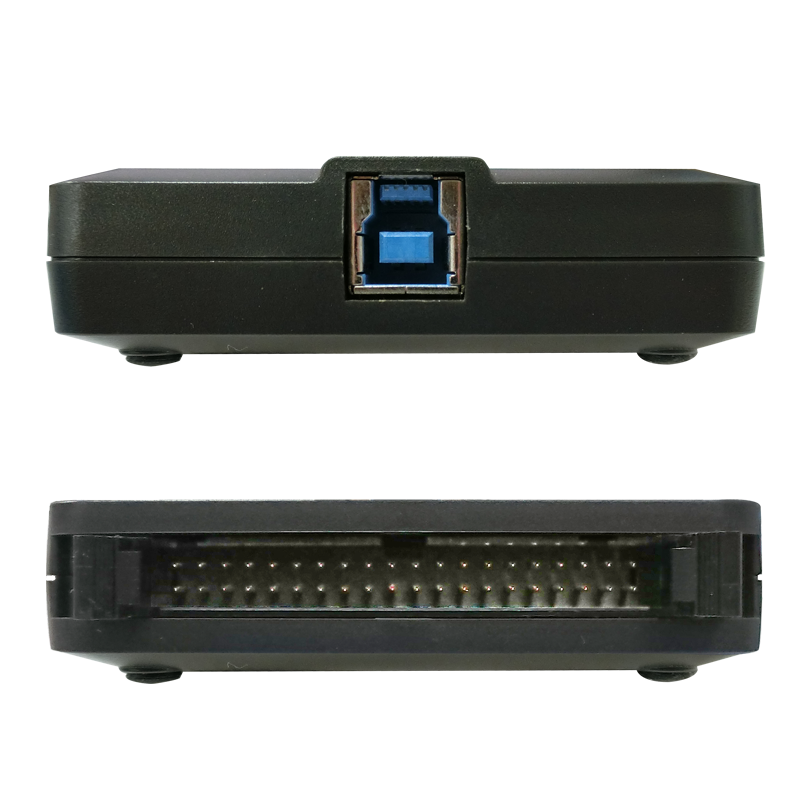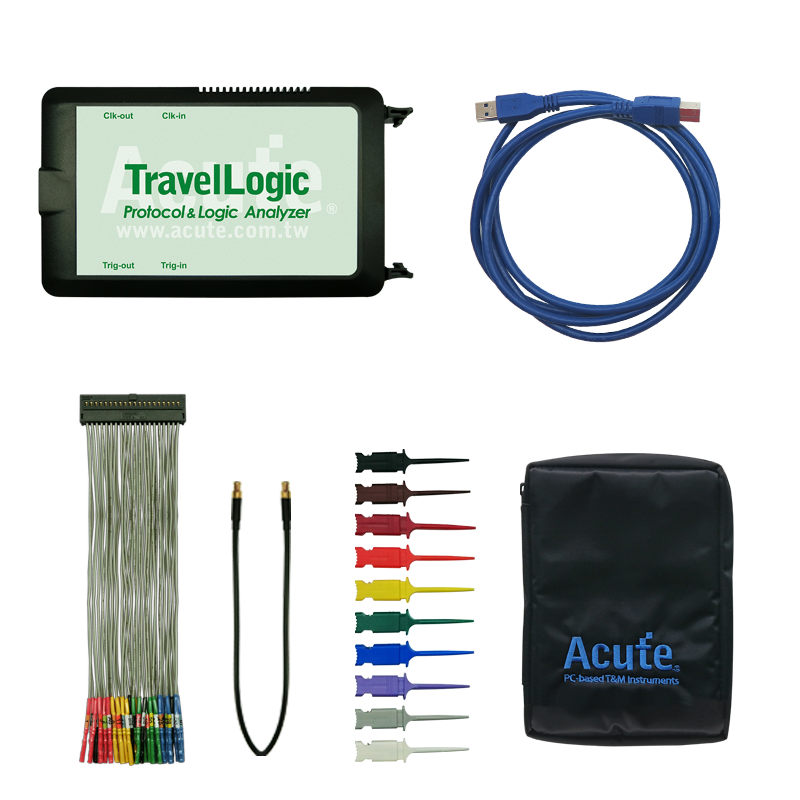|
Digital specifications
|
|
| power supply |
USB bus-power (+5V) |
| Static power consumption |
0.8W |
| Instantaneous maximum power consumption |
3W |
| Transmission interface |
USB 3.0 |
| Timing analysis (asynchronous, highest sampling
rate) |
2GHz |
| Status analysis (synchronization, external clock)
|
250MHz |
| Data storage method |
Traditional timing, transition timing |
| aisle |
34 |
| total memory |
4GB |
| Timing analysis |
Number of available channels (traditional
timing/transition timing) - memory per channel |
| 2GHz timing [number of channels available] - memory
per channel |
[8/7]-512Mb |
| 1GHz timing [number of channels available] - memory
per channel |
[16/14]-256Mb |
| 500MHz timing [number of channels available] -
memory per channel |
[32/28]-128Mb |
| 250MHz timing [number of channels available] -
memory per channel |
[32/32]-128Mb |
| Inter-channel phase error |
< 1ns |
| Input voltage channel |
N/A |
| Input voltage impedance |
200KΩ//<7pF< /td>
|
| Non-maximum destructive withstand voltage |
±30V DC, 12Vpp AC |
| Input voltage operating range |
±10V |
| Input voltage sensitivity |
0.25Vpp @50MHz, 0.5Vpp @150MHz, 0.8Vpp @250MHz |
| Trigger voltage group |
4 (ch0~7, ch8~15 & clk0, ch16~23, ch24~31 & clk1)
|
| Trigger voltage range |
±5V |
| Trigger voltage resolution |
50mV |
| Reference voltage accuracy |
±100mV + 5%*Vth |
| Trigger resolution |
500ps |
| Trigger type |
Channel, Label, Single/Multiple Stage, Width,
Timeout, Setup/Hold Time Check, External Trigger,
Manual |
| bus trigger |
BiSS-C, CAN2.0B/CAN FD, DALI, DP_Aux, HID over I2C,
I2C, I2S, LIN2.2, LPC, MDIO, Mini/Micro LED, MIPI
I3C 1.1, MIPI RFFE 3, MIPI SPMI 2, Modbus, PMBus,
Profibus, PWM, SENT, SMBus, SPI, SVI2, UART (RS232),
USB PD 3, USB1.1 |
| Agreement Analysis |
BiSS-C, CAN2.0B/CAN FD, DALI, DP_Aux, HID over I2C,
I2C, I2S, LIN2.2, MDIO, MIPI I3C 1.1, MIPI RFFE 3,
Modbus, PMBus, Profibus, PWM, SMBus, SPI, UART
(RS232), USB PD 3, USB1.1
|




